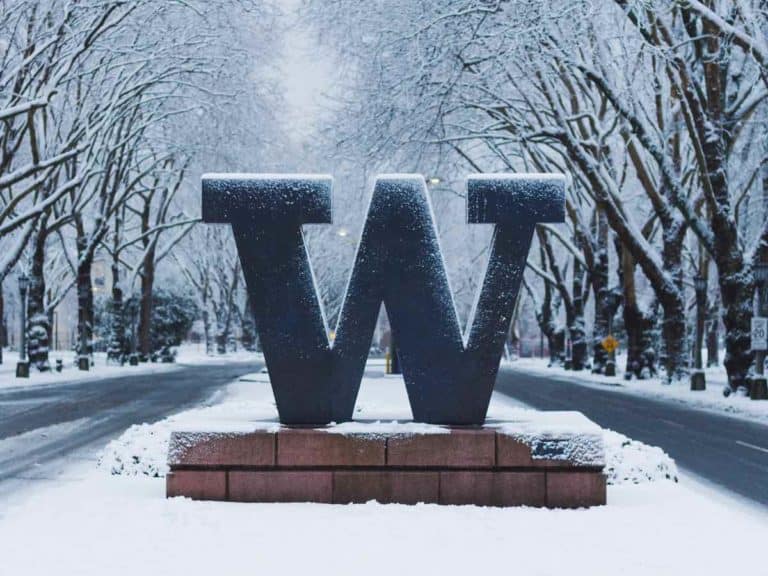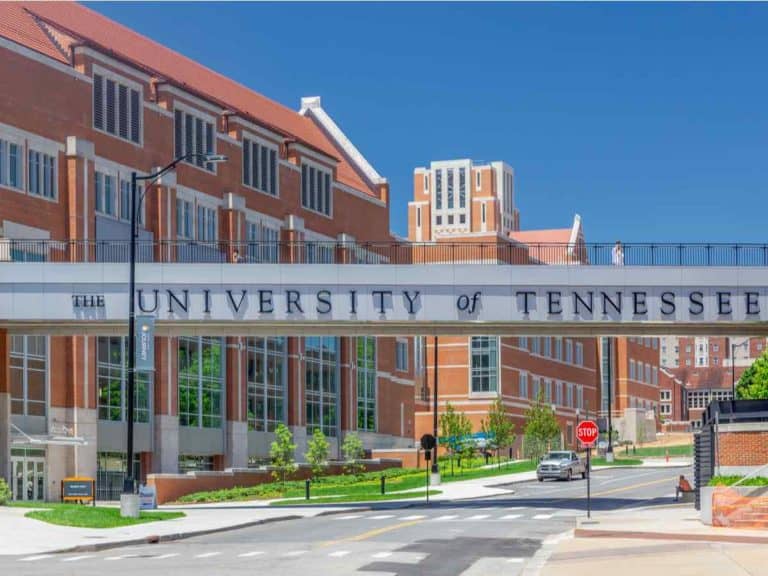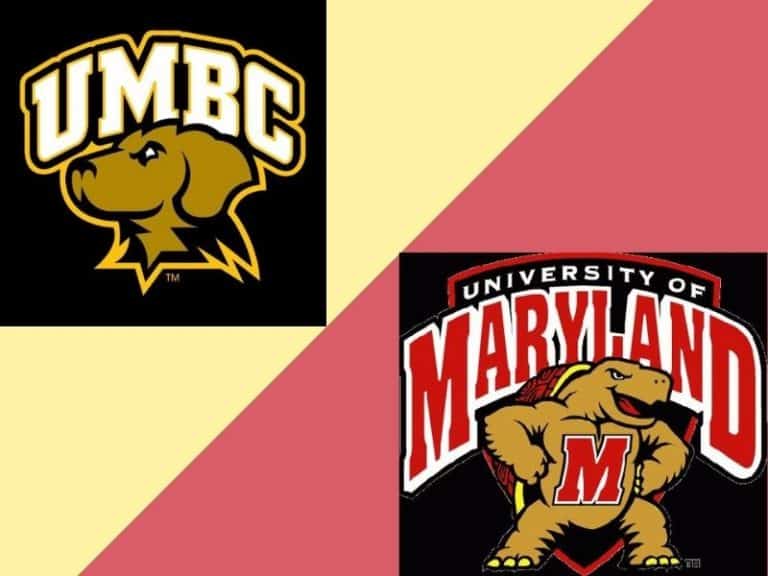Is Indiana University – Bloomington a Good School For You?
Flagship universities are some of the largest postsecondary institutions as far as campus size and population go. They are some of the oldest and most popular, too.
As such, they also tend to receive the most funding from the state.
Around 50 flagship institutions exist in the United States, and one of them is Indiana University – Bloomington. Also referred to as IU Bloomington, this school is the flagship of the Indiana University System.
It is considered a Public Ivy and has a Carnegie R1 designation.
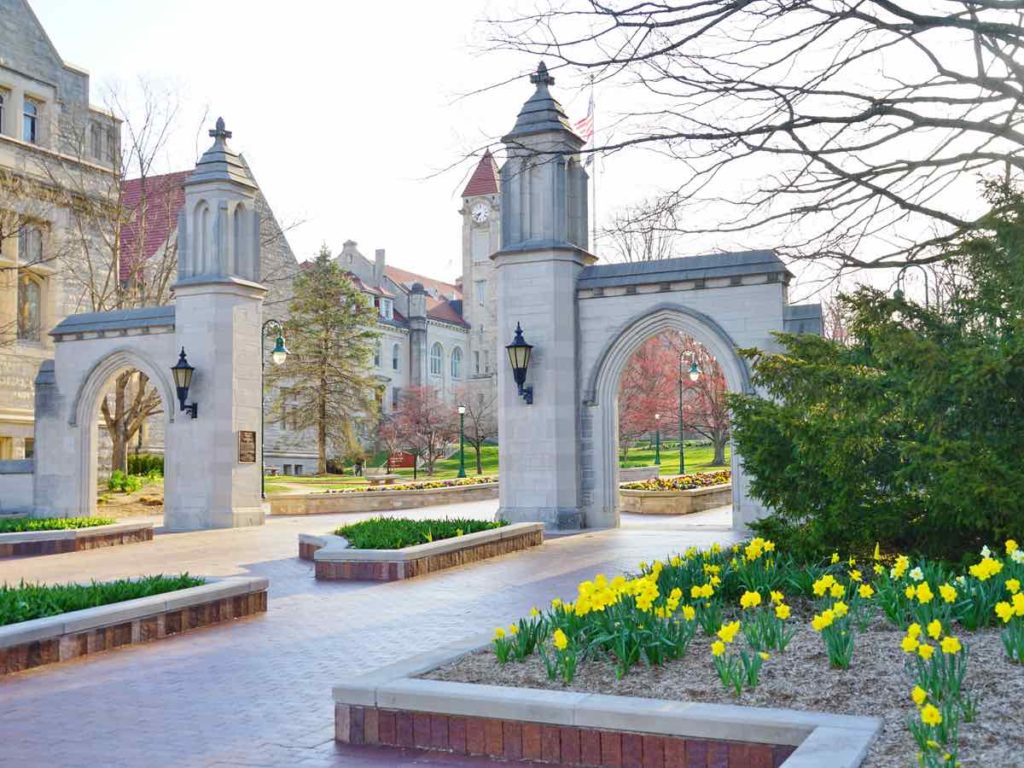
Life at IU Bloomington
Parties, check!
Frats and sororities, check!
Sports, check!
Indiana University Bloomington offers a vibrant campus experience, which makes it a superior choice for students who want to embrace their independence for the first time and check out what life beyond high school has to offer.
Party School
Indiana University is considered a party school.
Proof?
Niche ranks it #15 in Top Party Schools in America and #1 in Top Party Schools in Indiana.
Nearly a quarter of the students at the institution say that there are tons of raging parties almost any night of the week. Just about the same number of students say that the Little 500 is the biggest social event of the year.
The Little 500 is one of IU Bloomington’s most iconic yearly events.
Also known as The World’s Greatest College Weekend, the Little 500 is the biggest collegiate bike race in the United States. More than 25,000 fans flock to its campus every April to witness it.
Whether or not you are a partygoer, remember that IU Bloomington is a party school. It can affect your social life and academic performance, that’s why it is important to be mindful of it.
Greek Life
There are 66 fraternities and sororities to choose from at Indiana University – Bloomington.
Around 25% of the institution’s population are members of those. In other words, more than 8,000 of its undergraduate students are members of Greek letter organizations.
Everyone knows that frats come with a stigma.
However, IU Bloomington encourages and celebrates accountability among members of Greek associations. Such is done through the Greek Awards and Assessment Program (GAAP) which assesses and recognizes chapters.
The goal is to help fraternities and sororities align their activities and programs with the values of Indiana University – Bloomington. As a result, it enhances the membership experience.
Athletics
Founded over 200 years ago, IU Bloomington has a rich sports tradition.
The institution is primarily known for basketball. Its basketball team has won five NCAA Championships in men’s basketball – in 1940, 1953, 1976, 1981, and 1987.
Another popular sport at IU Bloomington is football. Its football team has won two Big Ten Conference championships. The first was in 1945, while the second was in 1967.
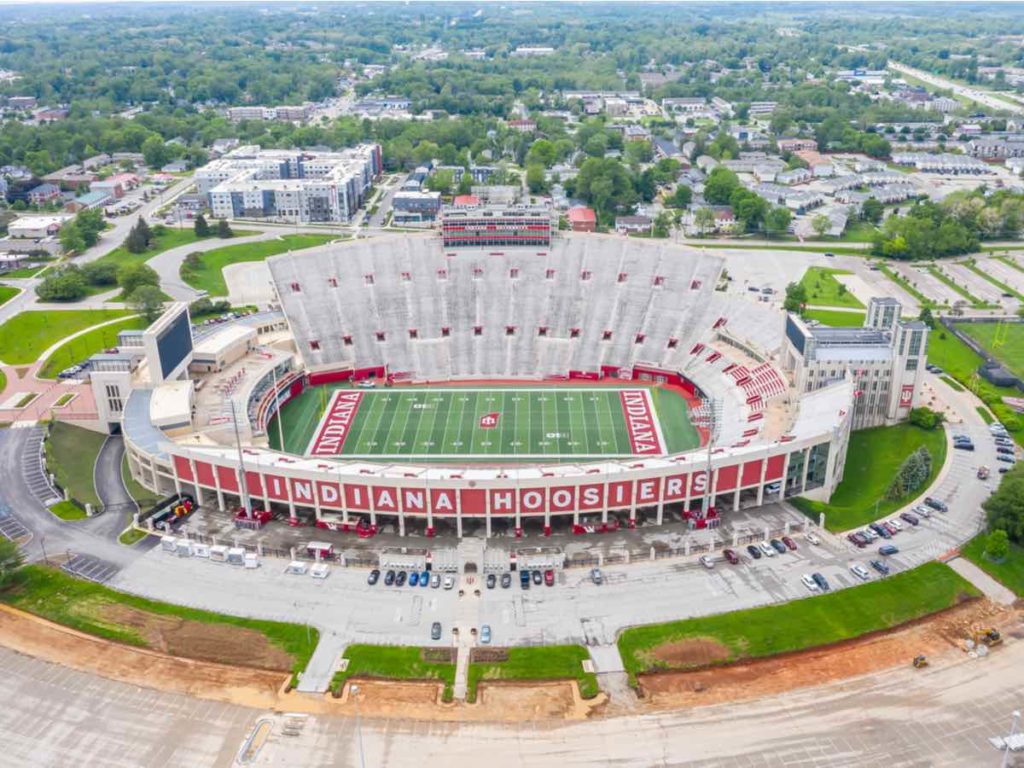
All in all, its sports teams have brought home 25 national team titles.
Besides basketball and football, Indiana University Bloomington also has top-notch programs for male and female students in sports such as swimming, tennis, and track and field.
At IU Bloomington, there are 24 varsity sports and over 55 club and intramural sports for athletes and sports enthusiasts to enjoy. This means that you will have plenty of opportunities to enjoy sports.
Extracurriculars
Over 750 student clubs and organizations are available at Indiana University – Bloomington.
Indiana University Bloomington provides a program called UI Corps. Simply put, it serves as a starting point for things related to service and volunteerism. It also matches students with 200+ volunteer opportunities, depending on their interests and skills.
Some groups on the IU Bloomington campus focus on addressing not only local issues but also global ones. As proof, some students go abroad during spring and summer breaks to embark on service trips.
The institution also boasts of a robust alumni network.
One of the largest alumni networks on the planet is that of the Indiana University system. Currently, there are more than 760,000 graduates worldwide who are willing to contribute to the school and its students.
Attending IU Bloomington integrates you into the said social system. As a member, get to enjoy a remarkable opportunity to build a professional network for career growth and direction.
Housing
Indiana University – Bloomington requires first-year students to live on campus.
The public research university says that it’s for a good reason. Undergraduates who live in its residence halls tend to have better GPAs and be more involved on campus. In addition, they are more likely to graduate on time.
Freshmen students can choose from over 20 residence halls and student apartments. Each housing option offers fully furnished rooms, on-campus dining, access to high-speed wireless internet, laundry facilities, and many more.
Later, students can choose to live off-campus or in a fraternity or sorority house.
As expected, there are exceptions to the rule.
For instance, living with a parent or guardian within a 25-mile radius of the IU Bloomington campus exempts you from the requirement to live on campus during your first year. The same is true if you are married or have kids.
Being a part-time student taking less than 12 credit hours per semester of your first year at the institution also allows you to live off campus.
Roommates are chosen randomly at IU Bloomington.
Fortunately, around 50% of new residents are happy with the roommates they are randomly assigned with. Resident Assistants (RAs) and the students work together to have a roommate agreement.
Student Body
More than 45,000 students are attending IU Bloomington. Of those, around 76% are undergraduates.
Its campus is not just large – it’s kind of diverse, too.
Most first-time, first-year students are Whites, accounting for about 66% of them. Nearly 11% are Asians, while about 8% are Latinos. Less than 5% of them are Blacks or African Americans.
Almost 27% of its students are from minority groups. IU Bloomington has received the following awards:
- Seventh consecutive 2021 Higher Education Excellence in Diversity (HEED) Award
- Fifth consecutive Diversity Champion Award
It’s worth pointing out that the said awards are the gold standard for successful programs and strategies for diversity and equity.
According to the institution, 54% of its freshmen students are from Indiana.
On the other hand, 41% of them are from other states. Only around 5% are from outside the US.
Campus
Besides having a large student body, Indiana University – Bloomington has a large campus, too. Among all its campuses, the biggest IU school is the Bloomington campus.
Having a city setting, its campus is 1,953 acres big. Amidst towering limestone structures and massive outdoor art installations lie vibrant spring blossoms and a babbling brook.
Some of the areas on campus worth taking selfies at include the following:
- Beck Chapel
- Biology Greenhouse
- Dunn Woods
- Indiana Memorial Union
- IU Auditorium
- Rose Well House
- Showalter Fountain
Outside the spacious campus, students working on their degrees have various shopping malls, bars, pubs, coffee shops, restaurants, theaters, parks, and trails to check out.
There are numerous events taking place throughout the year, ranging from the Monroe County Fair to the Hilly Hundred Bicycle Tour.
Safety
The IU Bloomington campus and Bloomington, Indiana are generally safe places.
However, one can never be 100% sure.
And that is why the public research institution does everything it can to maintain the safety and security of Hoosiers and give their loved ones, too, peace of mind.
On campus, there’s the IU Police Department (IUPD). The said law enforcement agency consists of full- and part-time officers who meet the same training standards just like the rest of the law enforcement officers in the state of Indiana.
Another safety program installed is a free campus bus service, which offers late-night services on weekends.
Then there’s also a safety escort ride for students who don’t want to walk alone late at night.
It’s important to note that the entire campus is well-lighted. Also, all residence halls feature emergency preparedness plans and staff members, too, who are available on-site on a 24/7 basis.
During the new-student orientation, safety issues are discussed, including the various safety-related services offered by the Division of Student Affairs. There’s also Protect UI providing students with safety information.
Academics
Business and computer science are some of the most highly-ranked undergraduate programs at IU Bloomington.
Many of its graduate-level programs are exceptional, too. Some examples are those offered by the institution’s Kelley School of Business, School of Education, and Maurer School of Law.
Majors
Undergraduate students attending Indiana University – Bloomington can choose from 200+ majors.
All degree-seeking students are required to declare a major. The school recommends they choose a major within their first 30 credit hours of coursework, equivalent to about two semesters.
Here are some of the most popular majors at the university:
- Business
- Marketing
- Biological sciences
- Communication
- Journalism
- Computer and information sciences
- Parks and recreation
- Visual and performing arts
- Public administration and social services
- Psychology
Highest Paying Majors
Some majors offered by Indiana University – Bloomington are more popular than the rest. Similarly, some of its majors allow graduates to make more money than their peers.
The following are some of the highest-paying majors in the public research institution:
| Major | Yearly Earnings ($) |
|---|---|
| Computer science | 67,600 |
| Business | 62,300 |
| Commerce | 62,300 |
| Registered nursing | 56,800 |
| Nursing administration | 56,800 |
| Mathematics | 54,000 |
| Economics | 49,400 |
| Public administration | 41,900 |
| Chemistry | 39,900 |
| Public health | 39,800 |
| Political science | 36,800 |
| Journalism | 35,800 |
| Criminal justice | 35,300 |
| Teacher education | 32,800 |
| Psychology | 30,600 |
| Social Work | 30,200 |
| Biology | 28,500 |
| History | 28,300 |
| Sociology | 28,200 |
It is important to note that the figures above are according to the average annual earnings of IU Bloomington graduates made six years after enrolling at the institution for the first time.
Classes and Faculty
One online forum after the other will tell you that the classes at IU Bloomington are big.
True enough, only less than 38% of its classes have fewer than 20 students. The rest can have a couple of hundred students, which is why it’s not surprising that a lot of them are held in enormous lecture halls.
The student-to-faculty ratio at the school is 18:1.
UI Bloomington has 2,141 faculty members. Of those, 1,930 have doctorate or terminal degrees. On the other hand, 194 possess master’s degrees, while 14 have bachelor’s degrees.
Graduation
Finding a job after getting your IU Bloomington degree should not be a problem.
According to a Niche poll, 95% of the institution’s graduates are employed two years after getting their hands on their diploma. On the other hand, around 94% of them feel that the school’s career center helped them find jobs.
Earlier, we mentioned the fact that Indiana University – Bloomington is the ultimate party school. In addition, it has a bustling Greek life and sports is a big part of the campus life.
There are indeed many things on campus that can get in the way of one’s studies.
Despite this, the school has a 72% graduation rate. It’s worth pointing out that the average graduation rate for public colleges and universities in the United States is only 63%.
How Do You Get In?
More than 50,000 incoming freshmen students apply to Indiana University – Bloomington.
Given that it doesn’t have an open admissions policy, not everyone gets in. You will be more than happy to learn, however, that the majority of applicants end up receiving an acceptance letter from the institution.
Acceptance Rate
The acceptance rate at IU Bloomington is 82%. There are different reasons for its low selectivity level. One of those is that it’s a massive school, which allows it to admit a lot of applicants.
Some applicants may meet admission requirements. However, their final admission is contingent on space availability.
So, in other words, IU Bloomington has a policy of placing students on a waiting list. Hundreds are offered a place on the waiting list each time. Unfortunately, only around 50% of them are admitted.
Application Deadline
Indiana University has a rolling admissions policy. This means that college-bound teens who are interested in attending do not have any hard deadline to beat for their applications to be considered for evaluation.
Its admissions office starts accepting applications every January 15 of the admission cycle.
While IU Bloomington doesn’t have early decision (ED), it has early action (EA), which is a non-binding admission policy. If you are planning to apply early, you better hurry up as the EA application closes on November 1.
Students who get admitted via EA receive notification on January 15.
SAT or ACT
Applicants who are unhappy with their test scores or were unable to sit for the SAT or ACT will be glad to know that Indiana University – Bloomington is a test-optional school.
This means that a student may or may not submit his or her standardized test scores.
However, it’s a must for anyone interested in attending IU Bloomington to note that test scores, if submitted, play an important role in the admissions process.
Among accepted applicants, around 38% submitted their SAT scores. On the other hand, around 21% of them submitted their ACT scores. The school’s admissions officers have super-scored their test scores during the review process.
Up to 25% of admitted students had a composite SAT score of 1390. The average composite SAT score of 50% of them, meanwhile, was 1280.
Up to 25% of admitted students had an average composite ACT score of 32. Meanwhile, the average composite SAT score of 50% of them was 30.
The problem with applying to a test-optional school is that many interested students may be confused as to whether or not they should submit their test scores. Making the wrong move, of course, can endanger their admission chances.
Scored 1180 or lower on your SAT or 27 or lower on your ACT?
Then it is probably a bad idea to include your test scores in your Common App or Coalition App. However, check that the various components of your application can make up for the lack of your SAT or ACT scores.
GPA
Refrain from assuming that just because Indiana University Bloomington has a very high acceptance rate of 82% means that admitted students have low high school grades.
According to the school’s most recent common data set (CDS), the average GPA of admitted first-time, first-year students is 3.76. What’s more, nearly 40% of all admits have a perfect 4.0 GPA.
However, do keep in mind that IU Bloomington does not require applicants to meet a minimum GPA requirement.
Admission Criteria
Three of the most important criteria that the institution’s admissions officers take into account when reviewing applications are the following: academic rigor, class rank and GPA.
So, in other words, taking challenging AP classes in high school can help boost your chances of getting in.
Graduating at or near the top of your high school class can also work to your advantage in the admissions process.
Recommendation letters are not required. However, IU Bloomington will accept one counselor recommendation and one teacher recommendation if students like to submit them to provide additional details.
Other than a college application essay, applicants must submit an Indiana University-specific essay, too.
The said essay should be 200 to 400 words long. Also, it should talk about the student’s interests as well as academic and career plans. Unusual challenges or circumstances education-wise may be discussed as well.
Various non-academic factors are considered in the admissions process. They include interviews, extracurricular activities, personal qualities, work experience, volunteer experience, and even race and residence.
However, alumni relations, religion, and demonstrated interest do not count.
Disclaimer: The views and opinions expressed in this article are those of the authors and do not necessarily represent those of the College Reality Check.

